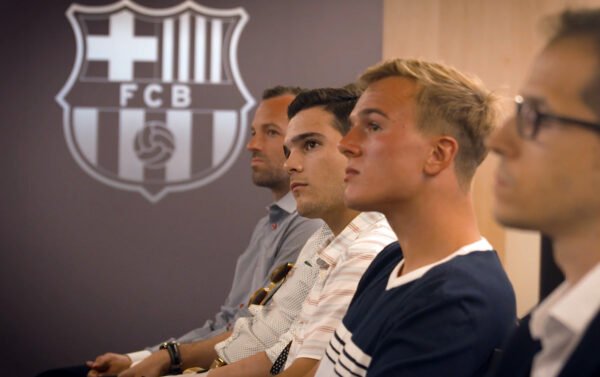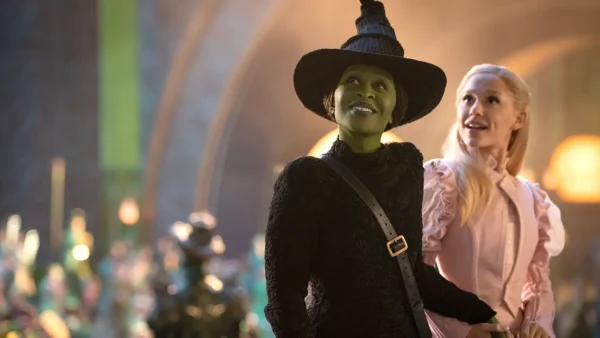
How Can We Get More Girls Into Professional Sport?

By the age of 14, girls drop out of sports at twice the rate of boys. After having gone through puberty, more than half of girls will have quit sports altogether according to a survey sponsored by Always, producers of female sanitary products.
Always responded with their #likeagirl campaign, an effort to draw attention to the stigma associated with girls in sport. A recent campaign, entitled ‘keep playing’, features young female sports stars challenging stereotypes they’ve received about playing sports.
While these efforts are commendable, girls looking to get into professional sport are still being inhibited by a lack of significant funding. Can sports scholarships help keep more girls in the game?
Commendable efforts are being made to encourage girls to get into sport
According to the Always survey, seven in ten girls aged 16 to 24 who quit sports during puberty said they didn’t feel like they belonged in sports. Nearly the same number said they felt that society doesn’t encourage girls to play sports.

Another effort to increase the participation of girls in sport is Sport England’s nationwide This Girl Can campaign, designed to get women and girls of all ages, regardless of their ability, into or back into sports. In December 2016, two years since launching the campaign, the Active People Survey found that the number of female participants in regular sport or exercise had increased to 7.2 million, narrowing the difference between men and women playing sport to just over 1.5 million.
Seven in ten girls aged 16 to 24 who quit sports during puberty said they didn’t feel like they belonged in sports.
In mid-2015, following a two-year scheme that aimed to get 40,000 more women and girls over 14 to start and continue playing football, the FA reported the number of young female players in the sport was on the rise. Exceeding targets, the female football participation programme secured an additional £3.7 million in funding for the following year. This, it is hoped, will continue to drive participation for women’s and girls’ football in the UK.

Despite these efforts to get more girls and women into sport, significant barriers to girls’ participation continues to be hampered by a lack of funding at the professional level.
Can sporting scholarships help keep girls in the game?
Kick it Out is a footballing association tackling racism and discrimination in the sport. In a recent news piece on American sports scholarships for aspiring women footballers in the UK, they quoted United Sports USA spokesperson Gabi Bilin: “Female football is massively overlooked in the UK compared to the US—there doesn’t seem to be enough encouragement and opportunities for girls.” Bilin goes on to explain “We continuously observe that girls are unaware of their possibilities across the Atlantic where female football (soccer) is more supported.”
Future Elite Sports, a UK-based sports scholarship agency, help students and families secure football scholarships and other sporting scholarships within the US college system. They help talented athletes win full or partial scholarships to facilitate academic study and sports coaching in the US.
“If there were more sponsorship and media coverage, some say, then women’s sport would be more popular.”
They explain: “American Universities can offer world-class match day stadia, state of the art training facilities and the best collegiate coaches in the world.” Provision in the UK just doesn’t compare, which likely results in an undervaluing of the importance of women’s professional sport.
US College soccer attracts a considerable crowd: in 2013, more than thirty teams drew average crowds of more than a thousand, and ten teams enjoyed an average attendance of more than two thousand. Some derbies were reported to have attracted over 10,000 fans. Women’s soccer in the US receives far more coverage than it does here in the UK. Raising the profile of pro women’s sport, as comes with the considerable investment in football scholarships in the US, might just help encourage more girls into the game back home too.
We need to make women’s pro sport more visible
Women’s sport has never been more popular, and opportunities to win sporting and football scholarships have never been more available, but when it comes to securing business and sponsorship, the funding continues to pale in comparison to that of pro men’s sport.
As one Economist article explains: “If there were more sponsorship and media coverage, some say, then women’s sport would be more popular.” This, though, it’s only a self-perpetuating problem: sponsors are unwilling to finance athletes and teams that don’t get good exposure, and the media is unwilling to showcase sport that doesn’t attract much sponsorship.
Significant efforts are now being made to increase sponsorship and commercial deals in women’s pro sport, a sector that, to date, has been almost entirely ignored—just 0.4% of all sports sponsorship deals (including women’s tennis and the ever-popular Jessica Ennis-Hill) go to women. That includes sports as diverse as women’s cycling, hockey and even the women’s Boat Race.
Women’s sport is now experiencing a watershed moment, with the announcement of full-time contracts for women in cricket, rugby union and now football: the Women’s Super League now awards female football players with club contracts a minimum salary of £20,000, up to as much as £60,000 per year. Still, football still preserves the largest gender pay gap in the world.
Increased funding is finally making women’s football and women’s sport not only a viable career, but increased scholarship and sponsorship opportunities is helping get more girls into pro sport too. Here’s hoping that sees girls’ and women’s participation in sport continue to grow.













































